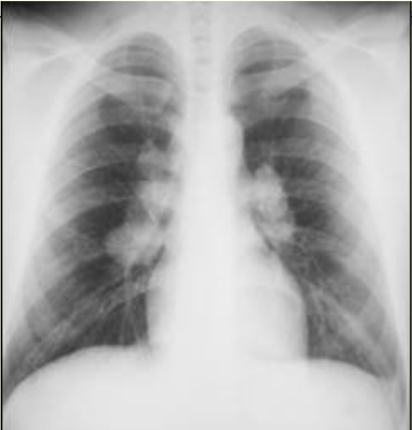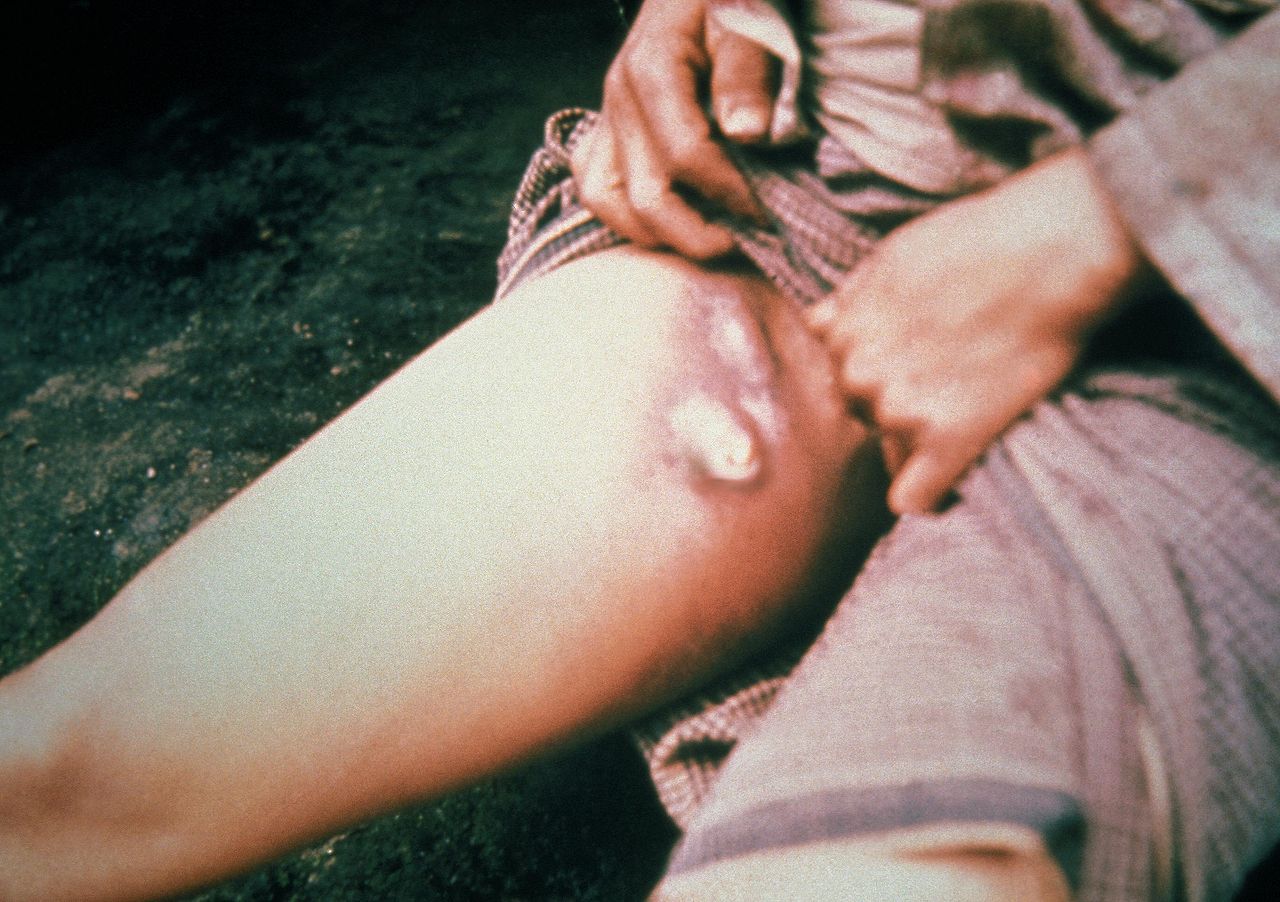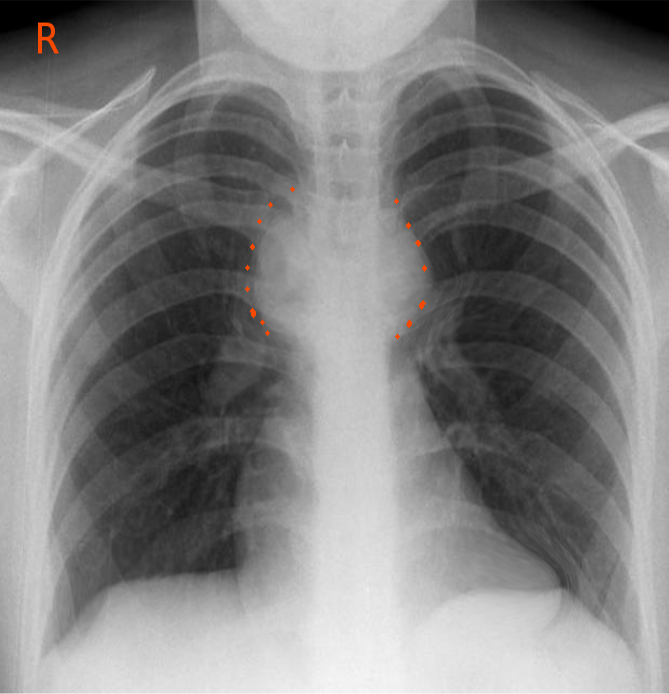[1]
Pannu AK,Prakash G,Jandial A,Kopp CR,Kumari S, Epitrochlear lymphadenopathy. The Korean journal of internal medicine. 2019 Nov
[PubMed PMID: 30514055]
[2]
Brucoli M,Borello G,Boffano P,Benech A, Tuberculous neck lymphadenopathy: A diagnostic challenge. Journal of stomatology, oral and maxillofacial surgery. 2019 Jun
[PubMed PMID: 30513392]
[3]
Fajgenbaum DC, Novel insights and therapeutic approaches in idiopathic multicentric Castleman disease. Blood. 2018 Nov 29
[PubMed PMID: 30487129]
[4]
Dorfman T,Neymark M,Begal J,Kluger Y, Surgical Biopsy of Pathologically Enlarged Lymph Nodes: A Reappraisal. The Israel Medical Association journal : IMAJ. 2018 Nov
[PubMed PMID: 30430795]
[5]
Kumar S,Gupta P,Sharma V,Mandavdhare H,Bhatia A,Sinha S,Dhaka N,Srinivasan R,Dutta U,Kocchar R, Role of Ultrasound-Guided Fine-Needle Aspiration Cytology of Omentum in Diagnosis of Abdominal Tuberculosis. Surgical infections. 2018 Nov 27
[PubMed PMID: 30481127]
[7]
Gaddey HL,Riegel AM, Unexplained Lymphadenopathy: Evaluation and Differential Diagnosis. American family physician. 2016 Dec 1;
[PubMed PMID: 27929264]
[8]
Vukovic S,Anagnostopoulos A,Zbinden R,Schönenberger L,Guillod C,French LE,Navarini A,Roider E, [Painful lymphadenopathy after an insect bite-a case report]. Der Hautarzt; Zeitschrift fur Dermatologie, Venerologie, und verwandte Gebiete. 2019 Jan
[PubMed PMID: 30229279]
Level 3 (low-level) evidence
[9]
Glushko T,He L,McNamee W,Babu AS,Simpson SA, HIV Lymphadenopathy: Differential Diagnosis and Important Imaging Features. AJR. American journal of roentgenology. 2021 Feb
[PubMed PMID: 33325733]
[10]
Mehrian P,Doroudinia A,Shams M,Alizadeh N, Distribution and Characteristics of Intrathoracic Lymphadenopathy in TB/HIV Co-Infection. Infectious disorders drug targets. 2019
[PubMed PMID: 30324894]
[11]
Dunmire SK, Verghese PS, Balfour HH Jr. Primary Epstein-Barr virus infection. Journal of clinical virology : the official publication of the Pan American Society for Clinical Virology. 2018 May:102():84-92. doi: 10.1016/j.jcv.2018.03.001. Epub 2018 Mar 5
[PubMed PMID: 29525635]
[12]
Patel S,Patel P,Jiyani R,Ghosh S,Patel D, A Rare Case of Hepatic Sarcoidosis Caused By Hepatitis B Virus and Treatment-Induced Opportunistic Infection. Cureus. 2020 Sep 14
[PubMed PMID: 33072462]
Level 3 (low-level) evidence
[13]
Xochelli A,Oscier D,Stamatopoulos K, Clonal B-cell lymphocytosis of marginal zone origin. Best practice & research. Clinical haematology. 2017 Mar - Jun
[PubMed PMID: 28288720]
[14]
Zhu M,Deng G,Tan P,Xing C,Guan C,Jiang C,Zhang Y,Ning B,Li C,Yin B,Chen K,Zhao Y,Wang HY,Levine B,Nie G,Wang RF, Beclin 2 negatively regulates innate immune signaling and tumor development. The Journal of clinical investigation. 2020 Oct 1
[PubMed PMID: 32865519]
[15]
Angelakis E,Raoult D, Pathogenicity and treatment of Bartonella infections. International journal of antimicrobial agents. 2014 Jul
[PubMed PMID: 24933445]
[16]
Improta L,Tzanis D,Bouhadiba T,Abdelhafidh K,Bonvalot S, Overview of primary adult retroperitoneal tumours. European journal of surgical oncology : the journal of the European Society of Surgical Oncology and the British Association of Surgical Oncology. 2020 Sep
[PubMed PMID: 32600897]
Level 3 (low-level) evidence
[18]
Foissac M,Socolovschi C,Raoult D, [Update on SENLAT syndrome: scalp eschar and neck lymph adenopathy after a tick bite]. Annales de dermatologie et de venereologie. 2013 Oct
[PubMed PMID: 24090889]
[19]
Siddiqui S,Osher J, Assessment of Neck Lumps in Relation to Dentistry. Primary dental journal. 2017 Aug 31
[PubMed PMID: 30188316]
[20]
Loizos A,Soteriades ES,Pieridou D,Koliou MG, Lymphadenitis by non-tuberculous mycobacteria in children. Pediatrics international : official journal of the Japan Pediatric Society. 2018 Dec
[PubMed PMID: 30290041]
[21]
Prudent E,La Scola B,Drancourt M,Angelakis E,Raoult D, Molecular strategy for the diagnosis of infectious lymphadenitis. European journal of clinical microbiology & infectious diseases : official publication of the European Society of Clinical Microbiology. 2018 Jun
[PubMed PMID: 29594802]
[22]
Portillo A,Santibáñez S,García-Álvarez L,Palomar AM,Oteo JA, Rickettsioses in Europe. Microbes and infection. 2015 Nov-Dec
[PubMed PMID: 26384814]
[24]
Rigilano J, Lymphadenopathy in Children and Young Adults May Be Due to a Periodic Fever Syndrome. American family physician. 2018 Jun 1;
[PubMed PMID: 30215943]
[26]
Perry AM, Choi SM. Kikuchi-Fujimoto Disease: A Review. Archives of pathology & laboratory medicine. 2018 Nov:142(11):1341-1346. doi: 10.5858/arpa.2018-0219-RA. Epub
[PubMed PMID: 30407860]
[27]
Kim JY,Lee H,Yun B, Ultrasonographic findings of Kikuchi cervical lymphadenopathy in children. Ultrasonography (Seoul, Korea). 2017 Jan
[PubMed PMID: 27998053]
[28]
Singh UB,Verma Y,Jain R,Mukherjee A,Gautam H,Lodha R,Kabra SK, Childhood Intra-Thoracic Tuberculosis Clinical Presentation Determines Yield of Laboratory Diagnostic Assays. Frontiers in pediatrics. 2021
[PubMed PMID: 34513756]
[29]
Edmonds CE,Zuckerman SP,Conant EF, Management of Unilateral Axillary Lymphadenopathy Detected on Breast MRI in the Era of COVID-19 Vaccination. AJR. American journal of roentgenology. 2021 Oct;
[PubMed PMID: 33543649]
[30]
Ge YL,Zhang Q,Wang MH,Zhang HL,Rana MA,Li WQ,Chen Y,Liu CH,Zhang S,Hao C,Zhang C,Zhu XY,Li LQ,Fu AS, Fever with Positive EBV IgM Antibody Combined Multiple Subcutaneous Nodules on Lower Extremities and Cervical Lymphadenopathy Masquerading as Infectious Mononucleosis Proven as Subcutaneous Panniculitis-like T-cell Lymphoma by Subcutaneous Nodule Biopsy Consultation: a Case Report and Literature Review. Clinical laboratory. 2019 Jul 1
[PubMed PMID: 31307165]
Level 3 (low-level) evidence
[31]
Sève P,Pacheco Y,Durupt F,Jamilloux Y,Gerfaud-Valentin M,Isaac S,Boussel L,Calender A,Androdias G,Valeyre D,El Jammal T, Sarcoidosis: A Clinical Overview from Symptoms to Diagnosis. Cells. 2021 Mar 31;
[PubMed PMID: 33807303]
Level 3 (low-level) evidence
[32]
King RL,Gupta A,Kurtin PJ,Ding W,Call TG,Rabe KG,Kenderian SS,Leis JF,Wang Y,Schwager SM,Slager SL,Kay NE,Koehler A,Ansell SM,Inwards DJ,Habermann TM,Shi M,Hanson CA,Howard MT,Parikh SA, Chronic lymphocytic leukemia (CLL) with Reed-Sternberg-like cells vs Classic Hodgkin lymphoma transformation of CLL: does this distinction matter? Blood cancer journal. 2022 Jan 28
[PubMed PMID: 35091549]
[33]
Ahuja J,Kanne JP,Meyer CA,Pipavath SN,Schmidt RA,Swanson JO,Godwin JD, Histiocytic disorders of the chest: imaging findings. Radiographics : a review publication of the Radiological Society of North America, Inc. 2015 Mar-Apr
[PubMed PMID: 25763722]
[34]
James J,Sammour YM,Virata AR,Nordin TA,Dumic I, Drug Reaction with Eosinophilia and Systemic Symptoms (DRESS) Syndrome Secondary to Furosemide: Case Report and Review of Literature. The American journal of case reports. 2018 Feb 14
[PubMed PMID: 29440628]
Level 3 (low-level) evidence
[35]
Mull ES,Aranez V,Pierce D,Rothman I,Abdul-Aziz R, Newly Diagnosed Systemic Lupus Erythematosus: Atypical Presentation With Focal Seizures and Long-standing Lymphadenopathy. Journal of clinical rheumatology : practical reports on rheumatic & musculoskeletal diseases. 2019 Oct
[PubMed PMID: 29280817]
[36]
Fugl A, Andersen CL. Epstein-Barr virus and its association with disease - a review of relevance to general practice. BMC family practice. 2019 May 14:20(1):62. doi: 10.1186/s12875-019-0954-3. Epub 2019 May 14
[PubMed PMID: 31088382]
[37]
Maria HKS,Gazzoli E,Drummond MR,Almeida AR,Santos LSD,Pereira RM,Tresoldi AT,Velho PENF, Two-year history of lymphadenopathy and fever caused by Bartonella henselae in a child. Revista do Instituto de Medicina Tropical de Sao Paulo. 2022
[PubMed PMID: 35195167]
[38]
Vergeldt TFM,Driessen RJB,Bulten J,Nijhuis THJ,de Hullu JA, Vulvar cancer in hidradenitis suppurativa. Gynecologic oncology reports. 2022 Feb
[PubMed PMID: 35106355]
[39]
Ferzacca E,Barbieri A,Barakat L,Olave MC,Dunne D, Lower Gastrointestinal Syphilis: Case Series and Literature Review. Open forum infectious diseases. 2021 Jun
[PubMed PMID: 34631920]
Level 2 (mid-level) evidence
[40]
Kubo T,Hino A,Fukushima K,Shimomura Y,Kurashige M,Kusakabe S,Nagate Y,Fujita J,Yokota T,Kato H,Shibayama H,Tanemura A,Hosen N, Nivolumab-induced systemic lymphadenopathy occurring during treatment of malignant melanoma: a case report. International journal of hematology. 2022 Feb 24
[PubMed PMID: 35201591]
Level 3 (low-level) evidence
[41]
Ma L,Ma J,Chen X,Dong L, A 10-year retrospective comparative analysis of the clinical features of brucellosis in children and adults. Journal of infection in developing countries. 2021 Aug 31
[PubMed PMID: 34516423]
Level 2 (mid-level) evidence
[42]
Wang X,Luo Y,Liu L,Wei J,Lei H,Shi S,Yang L, Metastatic adenocarcinoma to the breast from the lung simulates primary breast carcinoma-a clinicopathologic study. Translational cancer research. 2021 Mar;
[PubMed PMID: 35116465]
[43]
Theodosiou AA,Houghton R,Shepherd N,Lillie P, Painful lymphadenopathy due to silicone breast implant rupture following extensive global air travel. Acute medicine. 2017
[PubMed PMID: 29300798]
[44]
Manvi S,Mahajan VK,Mehta KS,Chauhan PS,Vashist S,Singh R,Kumar P, The Clinical Characteristics, Putative Drugs, and Optimal Management of 62 Patients With Stevens-Johnson Syndrome and/or Toxic Epidermal Necrolysis: A Retrospective Observational Study. Indian dermatology online journal. 2022 Jan-Feb
[PubMed PMID: 35198464]
Level 2 (mid-level) evidence
[45]
Abidoye O,Raybon-Rojas E,Ogbuagu H, A Rare Case of Epstein-Barr Virus: Infectious Mononucleosis Complicated by Guillain-Barré Syndrome. Cureus. 2022 Jan
[PubMed PMID: 35165547]
Level 3 (low-level) evidence



